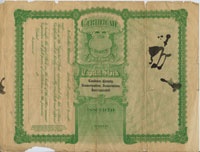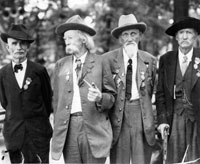Whose War Was It? Debating the Civil War

The interpretation of the Civil War is perhaps the most contentious topic in Virginia history. The causes and effects of the war were debated even before the surrender of Robert E. Lee and his forces at Appomattox Court House on 9 April 1865. Throughout the war, some Virginians supported the union. Unionists in western Virginia had chosen to remain with the Union and in 1863 formed the state of West Virginia. With the 150th anniversary approaching, the debates will continue in scholarly conferences, museum exhibitions, and public meetings. Almost immediately with the war’s end in 1865, white and black Virginians began shaping opposing histories of the events. For many white Virginians who fought for the Confederacy, the end of the war was a time of bitterness and resentment at the presence of federal troops. Black Virginians, on the other hand, rejoiced at the end of slavery and the hope of full participation as citizens of the commonwealth and the nation.
The Civil War brought a revolutionary transformation in the relationship between the races in Virginia and the South. The freedom granted by the advancing Union Army—which by 1863 included African American soldiers—was given legal status by the Preliminary Emancipation Proclamation (22 September 1862), the Emancipation Proclamation (1 January 1863), and, eventually, the 13th Amendment to the United States Constitution. African American communities across Virginia celebrated Emancipation on different days and actively debated what day was most appropriate. In Union-occupied Norfolk, African Americans marched in January 1863 as soon as the Emancipation Proclamation was announced and held celebrations thereafter on 1 January. Beginning in 1866 and for most of the nineteenth century, Richmond blacks celebrated 3 April, the day the city fell to Union forces, but in Loudoun County, 22 September held sway well into the twentieth century. Parades and orations with music by church choirs and marching bands marked many Emancipation Day celebrations. Some communities celebrated Emancipation on 19 June, known as “Juneteenth,” the date the last slaves were freed in Texas. The debates over the appropriate day of celebration tell us much about the meaning of Emancipation for African Americans and about evolving notions of freedom among black Virginians over time.

After the end of the Civil War, white Virginians sought ways to express publicly their bitterness and despair at their defeat. For many former Confederates, the presence of federal troops muted many public displays of sympathy for the Confederacy for a time after the Civil War, although white women organized days to decorate the graves of Confederate soldiers. By emphasizing loss and sacrifice, these commemorators drew attention to the soldiers and their deeds and away from the causes and consequences of the war. The myth of the Lost Cause offered the vision of a blameless South of placid plantations with benevolent masters and mistresses and happy, contented slaves. Gradually, during the last quarter of the nineteenth century, as the federal government turned its attention away from pursuing social, political, and economic improvements for the South’s blacks, former Civil War veterans from both the North and South engaged in reunions and monument-building that emphasized their common war experiences. Confederate veteran organizations staged reunions that included parades and musical events. The orations given at these reunions focused on the nobility of Robert E. Lee and the sacrifice and suffering of the soldiers. They also minimized the role slavery played in bringing about the war. Written into the history books, spoken at public gatherings, and included even in movies, the concept of the Lost Cause predominated among white Virginians.